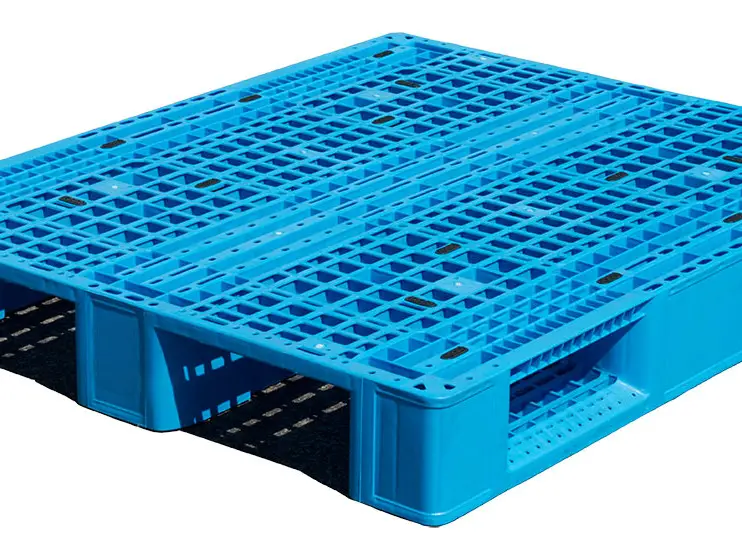Plastic pallets are being widely used by transport companies. Transporting fresh, frozen, pharmaceutical, and other goods requiring rigorous hygiene standards frequently use plastic pallets.
Even though Pallets made of plastic cost nearly three times as much as those made of wood, they are preferred because they are not porous, plastic pallets are simple to wash, sanitize, and sterilize.
But can we recycle these plastic pallets?
What Are Plastic Pallets Made of?
High-density polyethene (HDPE) and polypropylene are the two primary plastics used to make pallets (PP).
Both of these materials are robust and durable, offering the ideal blend of qualities for the packaging sector.
Plastic pallets are used extensively, carrying high loads, and encountering numerous obstacles.
Despite this significant wear and tear, plastic pallets can endure for at least 10 years when utilized for activities that are in line with their intended use.
Can We Reuse Plastic Pallets?
Plastic pallets can be utilized repeatedly, even in sterile environments.
One of the reasons, plastic pallets are preferred over wooden pallets, particularly in the food or pharmaceutical industries, is their adaptability.
Plastic is impervious to chemicals, water, and organic substances.
Plastic pallets can be reused as long as they are thoroughly cleaned, eliminating the possibility of contamination from one cargo transferring to another.
Can We Recycle Plastic Pallets?
Yes! The plastic pallets can be recycled.
Plastic recycling is now just as prevalent as paper recycling and metal recycling. Plastic pallets require a downstream recycling system when they reach the end of their useful lives.
Once the Pallets are no longer usable if they have been damaged or are no longer functional. They should be cleaned and then shipped for recycling.
Process of Recycling Plastic
Before processing, plastic is gathered and categorized into similar materials. There are numerous steps in the recycling process.
- CLEANING. First, Pallets are cleaned and sanitized. The quality of recycled plastic is impacted by contaminants left behind from its prior use, thus plastic must be as clean as possible before processing.
- SHREDDING. Then, in the next stage of recycling, plastic items are shredded into flakes. So that they can be easily processed in the following step.
- MELTING AND EXTRUDING. The melting and extruding procedure are the brains of a plastic recycling facility. Long strands of recycled plastic come out of the extruder.
- SHAPING. By running the extruded plastic through a die and shaping it into the correct shape, pellets or granules are produced in the final stage.
Uses of Recycled Plastic
Due to the fact that recycled plastic is produced in the same way as new plastic, it resembles virgin plastic very closely.
This Recycled plastic is used as a raw material by many producers of a variety of goods and industries.
Recycled plastic is used in a variety of consumer goods, including bottles, bags, and food containers.
Because plastic lasts a very long time and requires no continuing maintenance, products that replace wood are likewise very popular.
Conclusion
So, the answer is Yes! Plastic pallets are indeed recyclable. Recycled plastic can be used to produce a wide range of products.







